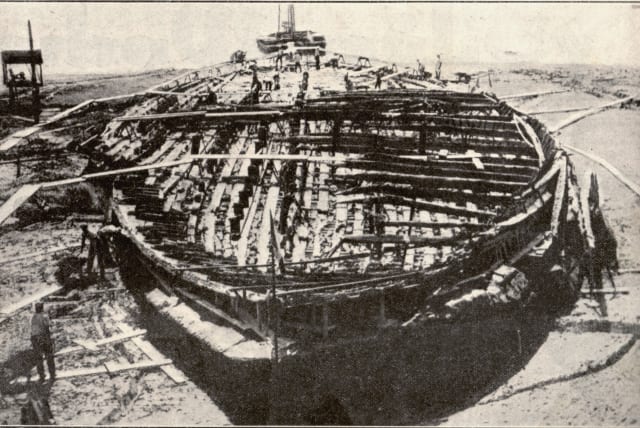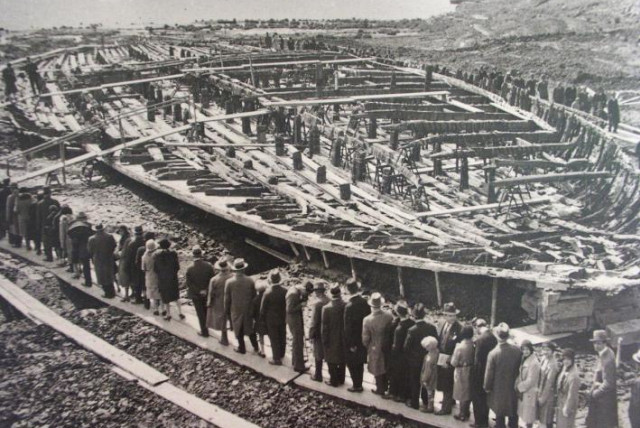Stone head, thought to be from Roman Emperor Caligula’s ship, found in Italian lake

Large ships constructed by Roman Emperor Caligula were extracted from the lake in the 1930s but were destroyed during World War II.
A stone head was found in Lake Nemi in Italy by municipal workers trying to clean the lakebed, according to media reports from June 26. Experts believe that the head may have fallen from one of Roman Emperor Caligula’s ships.
While archaeologists have not yet fully investigated the head, the general consensus is that it likely came from the 1st century CE.
Trying to search the lake for archaeological treasures
The existence of archaeological treasures in the water was something previously known to both locals and officials. Shipwrecks in the lake had been investigated in 1446 by Cardinal Prospero Colonna and Leon Battista Alberti, according to Heritage Daily. However, equipment at the time was not advanced enough to reach the depths needed (18.3 meters.)
Additionally, in 1927, Italian dictator Benito Mussolini attempted to have the lake drained so that he could see the shipwrecks, however mud eruptions and subsidence prevented recovery until 1932.
Prima nave, a 70-meter-long ship from the Roman Empire, was the first to be recovered from the lake. The ship was found to have been protected by paint and tarred wool on the topside timbers and was decorated by marble, mosaics, and gilded copper roof tiles.
Roman historian Suetonius described the ship as having "ten banks of oars, with sterns set with gems, particolored sails, huge spacious baths, colonnades, and banquet-halls, and even a great variety of vines and fruit trees; that on board of them he might recline at table from an early hour, and coast along the shores of Campania amid songs and choruses," according to the Encyclopaedia Romana by James Grout.
The Seconda nave was recovered later and was damaged during the extended attempts to drain the lake. In 1939, the two ships were presented to the public in a specially-built gallery at the Museo delle Navi Romane.
The ships were later destroyed during World War II when the museum they were stored in was bombed.
Jerusalem Post Store
`; document.getElementById("linkPremium").innerHTML = cont; var divWithLink = document.getElementById("premium-link"); if (divWithLink !== null && divWithLink !== 'undefined') { divWithLink.style.border = "solid 1px #cb0f3e"; divWithLink.style.textAlign = "center"; divWithLink.style.marginBottom = "15px"; divWithLink.style.marginTop = "15px"; divWithLink.style.width = "100%"; divWithLink.style.backgroundColor = "#122952"; divWithLink.style.color = "#ffffff"; divWithLink.style.lineHeight = "1.5"; } } (function (v, i) { });

